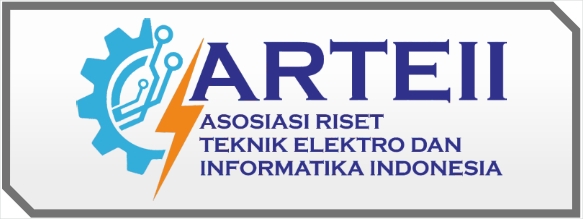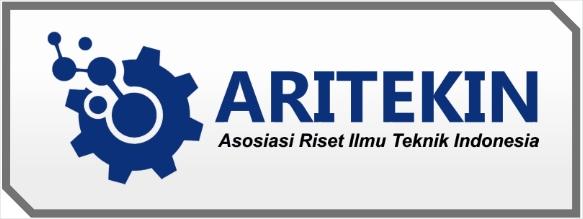Implementasi Data Mining Untuk Mengelompokkan Data Penjualan Berdasarkan Pembelian Pada UD. Martua Dengan Menggunakan Algoritma K-Means
DOI:
https://doi.org/10.59581/jusiik-widyakarya.v1i4.1531Keywords:
Data Mining, K-Means Algorithm, Product TechnologyAbstract
Currently we cannot escape the influence of information technology. Because like it or not, the development of science and the application of technology is experiencing an increasingly rapid increase, especially in every work environment such as business practitioners.Computer/information technology is the technology that is most widely used in various agencies, both government and private. The rapid development of technology over time means that human work can generally be completed quickly. Technology is a tool that is often used in human activities. The role of technology today makes information processing easier because processing is necessary so that the resulting information can be useful for its users. Competition in the business world requires developers to find a pattern that can increase sales and marketing of goods, one of which is by utilizing transaction data. The availability of abundant data, the need for information to support decision making to create business solutions, and infrastructure support in the field of information technology are the reasons for the birth of data mining technology. Problems that occur at UD. Martua is lacking in reviewing the products being sold, what products consumers need and less effective data storage. With data mining, it is intended to provide real solutions to UD. Martua can find out which items are selling well and which items are not selling well, then can compare sales from year to year to become an effective medium for developing sales at UD.Martua. In grouping sales data, the fields used are item name, quantity purchased, quantity sold for 1 week, then the data will be processed with the k-means clustering algorithm. The final result with 20 grouping data samples was the final result with 2 clusters, namely, cluster 1 (C1) with 10 best-selling items, cluster 2 (C2) with 10 non-selling items. With data mining using the K-Means algorithm, losses for UD.Martua..speeding up decision making to restock goods that are selling well so that consumers who want to buy don't have to wait long. Providing information from sales data to find out what causes profits or losses at UD.Martua. Providing convenience for UD.Martua in determining which products are selling and which are not selling so that there is no accumulation of goods that are not selling and resulting in losses for UD.Martua.
References
Achmad Fikri Sallaby1, Alinse2, R. T., Sari3, V. N., & Tri Ramadan. (2022). PENGELOMPOKAN BARANG MENGGUNAKAN METODE K-MEANS CLUSTERING BERDASARKAN HASIL PENJUALAN. 18(1), 99–104.
Adani, N. F., Boy, A. F., Kom, S., Kom, M., Syahputra, R., Kom, S., & Kom, M. (2022). Implementasi Data Mining Untuk Pengelompokan Data Penjualan Berdasarkan Pola Pembelian Menggunakan Algoritma K-Means Clustering Pada Toko Syihan. x, 1–10.
Fitri Amelia Sari Lubis1,, Siti Sahara Lubis2, B. H. (2023). Jurnal Sains Informatika Terapan ( JSIT ) Jurnal Sains Informatika Terapan ( JSIT ). 2(2), 50–55.
Fungki Wahyu1, B. H. (2023). Perbandingan Algoritma Time Series Dan Fuzzy Inference System Dalam Analisis Data Deret Waktu. 1(3).
Ginting1, R. S., Hamdani2*, H., Septiariani3, A., & Faza Alameka4. (2022). Clustering Tindak Kekerasan Dalam Rumah Tangga Di Kota Samarinda. 6, 172–177. https://doi.org/10.47002/metik.v6i2.378
Juliantho, D. A., & Hendrik, B. (2023). Komparasi Algoritma K-Means Dan K-Medoids Dalam Clustering Penyebaran Kasus Covid 19. Jised: Journal of Information System and Education Development, 1(2), 30–32.
Karseno, D., Agustin, R., & Hendrik, B. (2023). Jurnal Manajemen dan Bisnis IMPLEMENTATION OF PERFORMANCE ASSESSMENT OF INDRAGIRI. 12(1), 78–85.
Resnawita1, B. H. (2023). Penggunaan Metode Systematic Literatur Review Untuk Menganalisis Artikel Sistem Pakar Metode Forward Chaining. 1(2), 1–5.
Rizqi Nusabbih Hidayatullah Gaja1, B. H. (2023). Jurnal Teknik Informatika, Vol. 15, No. 3, Agustus 2023. 15(3), 97–102.
Salim, A., Rijal, K., Hendrik, B., Informatika, T., Putra, U., & Yptk, I. (2023). Studi Literatur Sistem Penilaian Esai Otomatis Pada E-Learning Dengan Algoritma Winnowing Studi Literatur Sistem Penilaian Esai Otomatis Pada E-Learning Dengan Algoritma Winnowing. 1(3).
Siregar, Diffri Solihin, B. H. (n.d.). Implementasi Metode MAUT Dan AHP Dalam Penentuan Penerima Bantuan Program Indonesia Pintar ( Studi Kasus : SD Aek Nabara Tonga ) dalam pemilihan siswa penerima bantuan PIP tidak tepat sasaran dan tidak sesuai dengan Untuk memecah permasalahan pada penelit. 1(3).
Siti Sahara Lubis1, Fitri Amelia Lubis2, B. H. (2023). Customer Relationship Management Dalam Meningkatkan Loyalitas Pelanggan Pada Doorsmeer Keluarga Nasution Menggunakan Metode Algoritma K-Means. 1(2), 33–40.
Syafrinal, I., & Febrianti, E. L. (2022). PENERAPAN ALGORITMA K-MEANS PADA APLIKASI DATA MINING UNTUK MENENTUKAN POLA PENJUALAN ( STUDI KASUS : ZAHRA MART ). 18(1), 1–6.
Downloads
Published
How to Cite
Issue
Section
License
Copyright (c) 2023 Siti Sahara Lubis, Billy Hendrik

This work is licensed under a Creative Commons Attribution-ShareAlike 4.0 International License.













